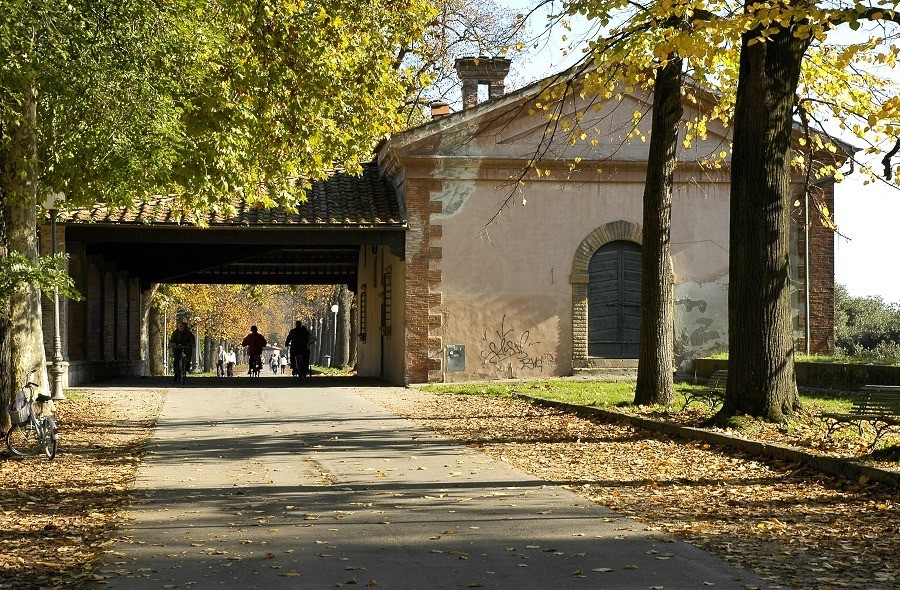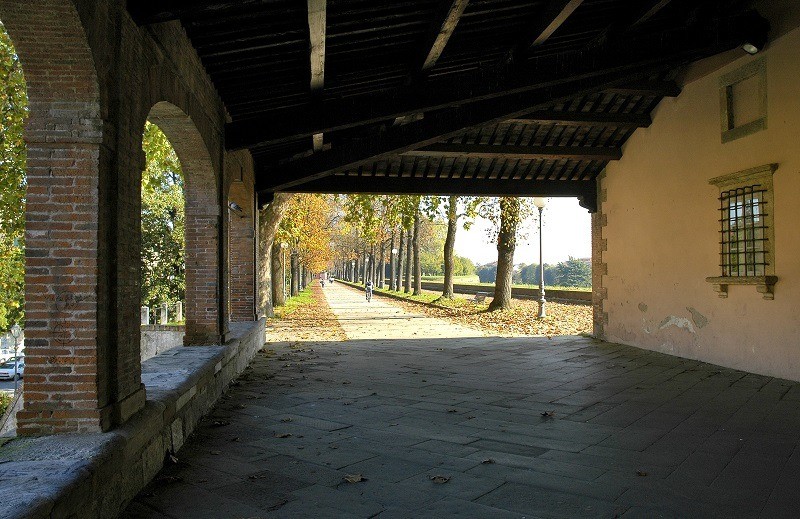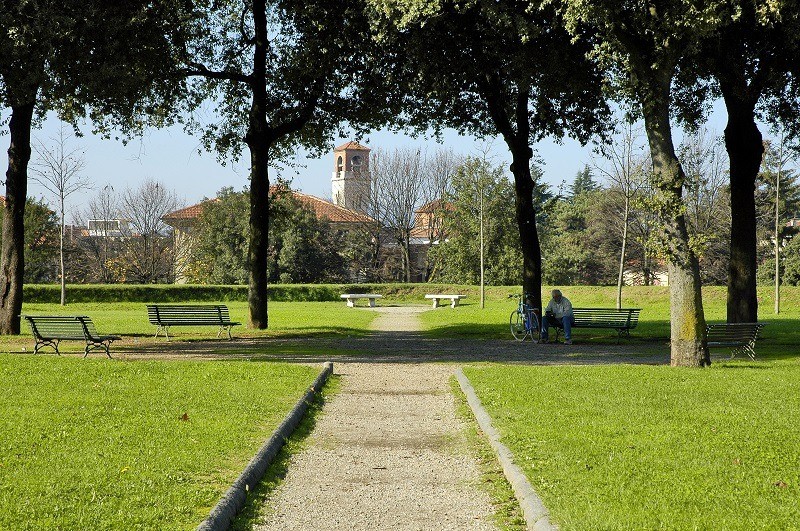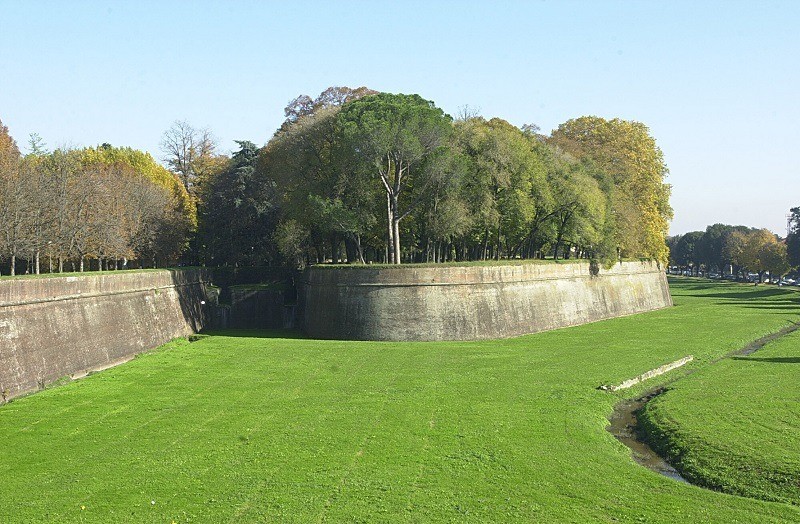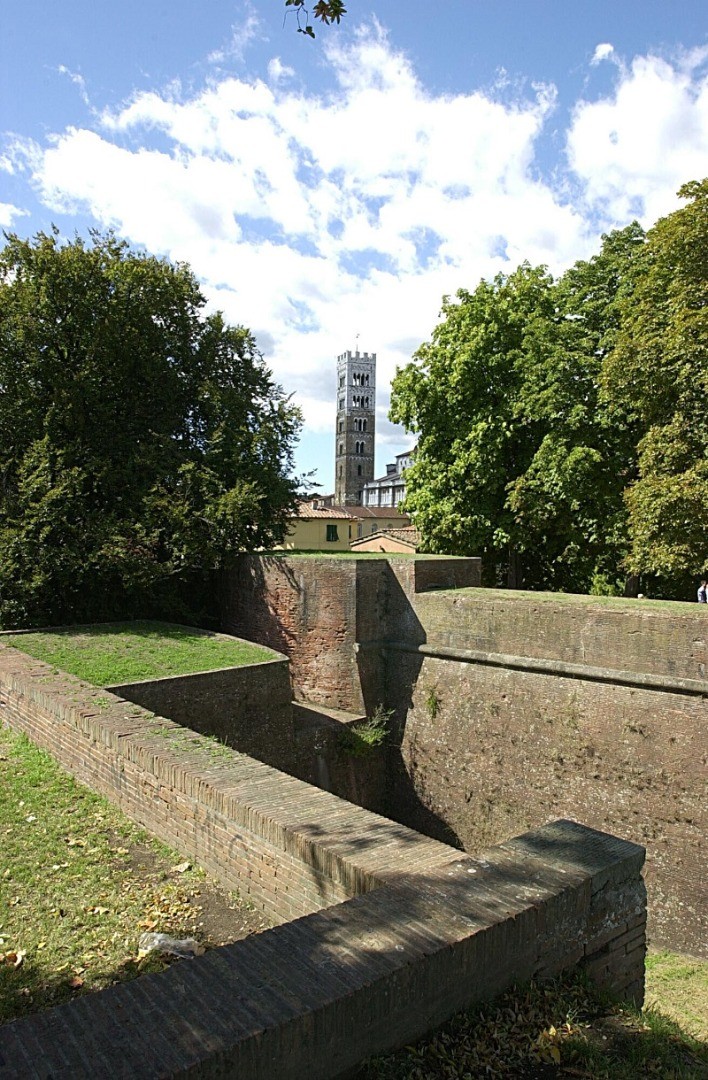The Walls of Lucca
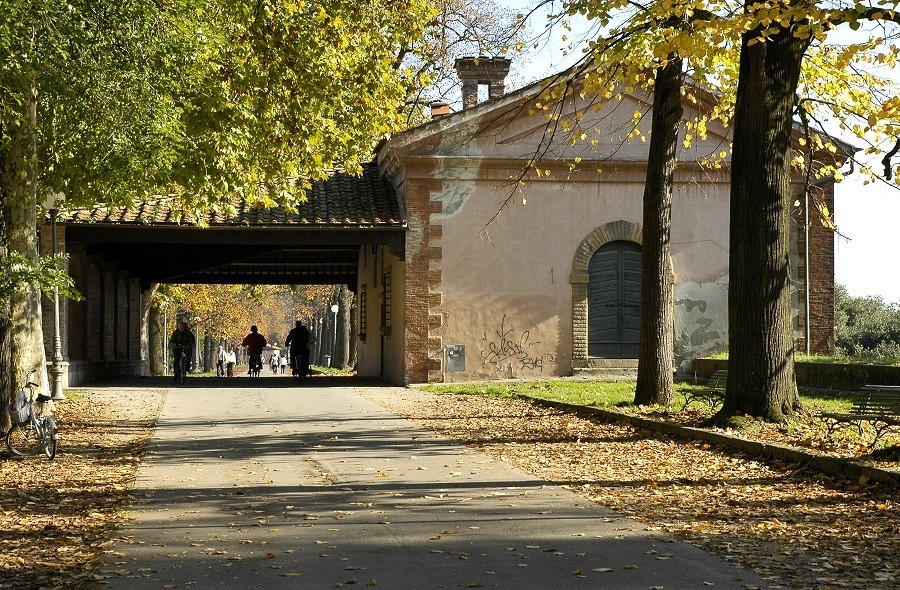
The walls of Lucca, a symbol of the city recognized worldwide both for its artistic-monumental beauty and for its historical value, were built between the mid-sixteenth century and the early seventeenth century, they are the greatest example in Europe of walls built according to the principles of the modern fortification that have been preserved until today.
The walls are also a green oasis that surrounds the entire historic center in an embrace, where citizens and tourists go for a walk, run or bike, and ideal for families with children, as well as being a privileged point of view for a visit of the city: from the 12 meters high on which the road runs, you can see unprecedented glimpses of the main monuments.
The current walls of Lucca, exactly 4 kilometers and 223 meters long, are the result of the last reconstruction campaign, which started on 7 May 1504 and ended only a century and a half later, in 1648. The works also took place in the second half of the seventeenth century, with structural updates based on new knowledge and construction techniques. Never used for defensive purposes, the modern structure is divided into 12 curtains and 11 bulwarks. The walls represent a strong sign of cultural identity and a container for the historical memory of the territory.
The walls were also conceived as a deterrent. In particular, the Republic of Lucca feared the expansionist aims before Florence and, subsequently, the Grand Duchy of Tuscany. However, there was never a real open war against the Grand Duchy. There were conflicts with the Duchy of Modena (16th and 17th centuries), but exclusively in Garfagnana, so Lucca never had to undergo any siege. The only occasion in which the walls were put to the test was during the disastrous flood of the Serchio in November 18, 1812. The doors were bolted and with the help of mattresses and straw mattresses a relative water tightness was guaranteed in the center of Lucca.
Elisa Bonaparte herself, Princess of Lucca and Piombino, to enter the city was hoisted with a sort of balance wheel so as not to open the barred doors to the fury of the waters.
The structure was converted into a pedestrian promenade by Maria Luisa of Bourbon-Spain (in office from 1815 to 1824), in order to play the role of a large public park, especially thanks to its length of over 4 kilometers. The new use of the walls also affected the external spaces in front, which were converted into huge lawns. The path above the walls is currently used for walking and physical activity, but in the summer it also acts as a natural stage for shows and events.
The walls are also a green oasis that surrounds the entire historic center in an embrace, where citizens and tourists go for a walk, run or bike, and ideal for families with children, as well as being a privileged point of view for a visit of the city: from the 12 meters high on which the road runs, you can see unprecedented glimpses of the main monuments.
The current walls of Lucca, exactly 4 kilometers and 223 meters long, are the result of the last reconstruction campaign, which started on 7 May 1504 and ended only a century and a half later, in 1648. The works also took place in the second half of the seventeenth century, with structural updates based on new knowledge and construction techniques. Never used for defensive purposes, the modern structure is divided into 12 curtains and 11 bulwarks. The walls represent a strong sign of cultural identity and a container for the historical memory of the territory.
The walls were also conceived as a deterrent. In particular, the Republic of Lucca feared the expansionist aims before Florence and, subsequently, the Grand Duchy of Tuscany. However, there was never a real open war against the Grand Duchy. There were conflicts with the Duchy of Modena (16th and 17th centuries), but exclusively in Garfagnana, so Lucca never had to undergo any siege. The only occasion in which the walls were put to the test was during the disastrous flood of the Serchio in November 18, 1812. The doors were bolted and with the help of mattresses and straw mattresses a relative water tightness was guaranteed in the center of Lucca.
Elisa Bonaparte herself, Princess of Lucca and Piombino, to enter the city was hoisted with a sort of balance wheel so as not to open the barred doors to the fury of the waters.
The structure was converted into a pedestrian promenade by Maria Luisa of Bourbon-Spain (in office from 1815 to 1824), in order to play the role of a large public park, especially thanks to its length of over 4 kilometers. The new use of the walls also affected the external spaces in front, which were converted into huge lawns. The path above the walls is currently used for walking and physical activity, but in the summer it also acts as a natural stage for shows and events.
Mura urbane, Lucca
Scopri altre attrazioni vicino a The Walls of Lucca
See allYou may also like..
See all
0











